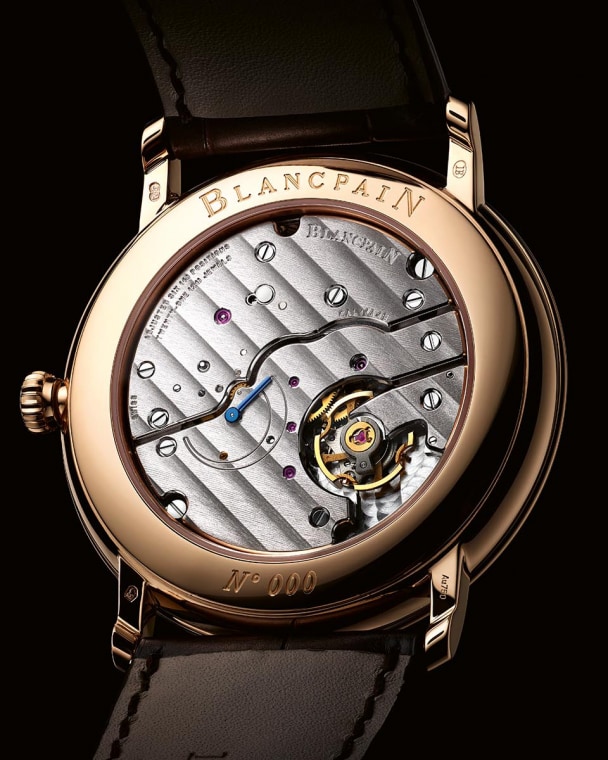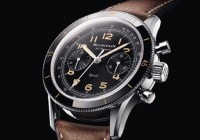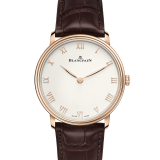
Search in Issues
Chapters
List of parts
Chapter 7
Villeret Ultraplate
Understatement and refinement are the touchstones of the new Villeret Ultraplate.
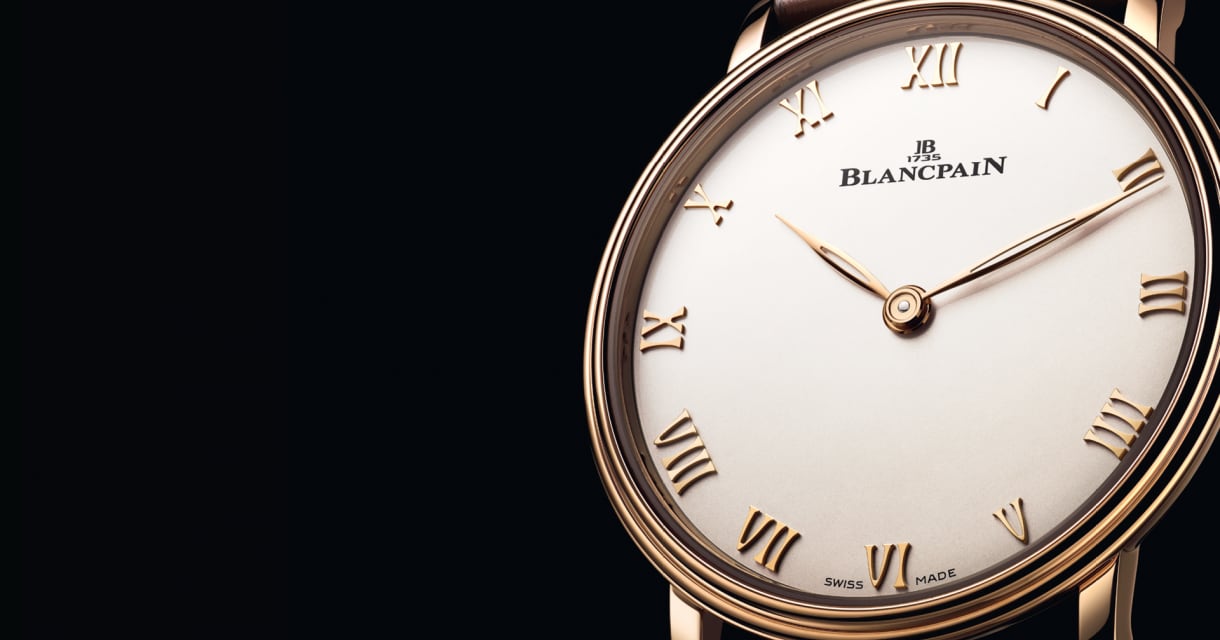
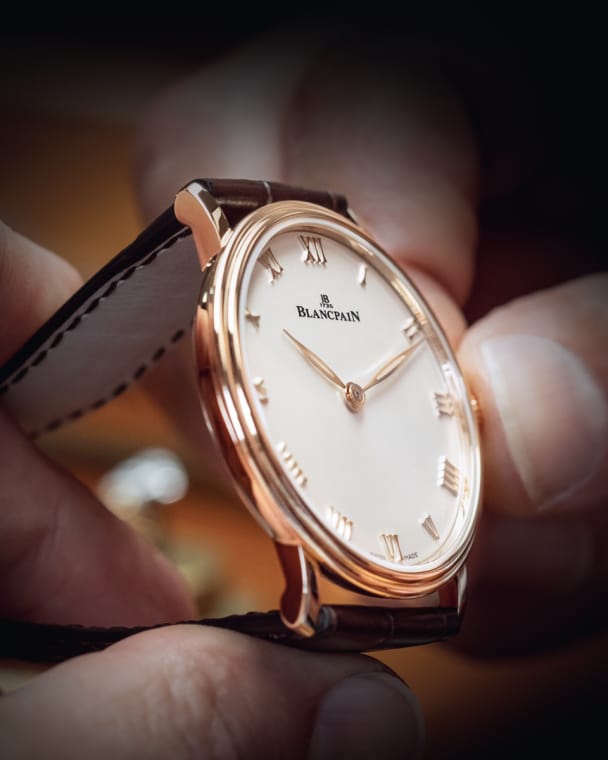
In achieving its THIN PROFILE, Blancpain admitted no compromises in power reserve or performance.
When considering an ultra-thin watch, what matters? Are you looking to strap a world record upon your wrist or are you searching instead for an elegantly thin, refined timepiece? The question, which at first reading may appear a bit flippant, actually is deeply probative. Its answer reveals the difference between marketing talking points and a finely turned out dress watch.
What underlies this dichotomy is the degree to which compromises are made.
If the goal is world-record thinness, sacrifices are inevitable. Sometimes it means removing the dial. After all, a dial lends thickness to the watch. Sometimes it requires lowering the power reserve, with a smaller thinner barrel replacing a larger one. Other times the answer is a reduction in frequency, as a lower frequency, which unfortunately brings with it a reduction in precision, helps to compensate for a smaller barrel. Even more extreme is eliminating the movement mainplate and using the caseback or dial as a component of the movement; thinner “yes”, but at the price of fragility.
The more sensible way to consider the question of thinness is how the watch wears on the wrist. Shaving off one or two millimeters in height simply cannot be perceived when the watch is worn. By contrast, lesser performance, precision and/or reliability most definitely can be perceived. Plainly, diminution of performance, precision and/or reliability would seem to be improvident trades. With its new Villeret Ultraplate, Blancpain casts its lot in the camp of an elegant profile with no sacrifices.
Refinement and understatement are the touchstones for the Villeret Ultraplate. The dial side offers a classic time-only display, hours and minutes reading upon applied Roman numerals. So as not to detract from the purity of the dial, the power-reserve indication is placed on the back of the watch where it perfectly and discreetly serves its purpose of showing the state of wind when the watch is either being placed on the wrist or removed for the evening. Those are the two most logical occasions to read the reserve.
As the name suggests, the PROFILE ON THE WRIST is ULTRA-THIN.
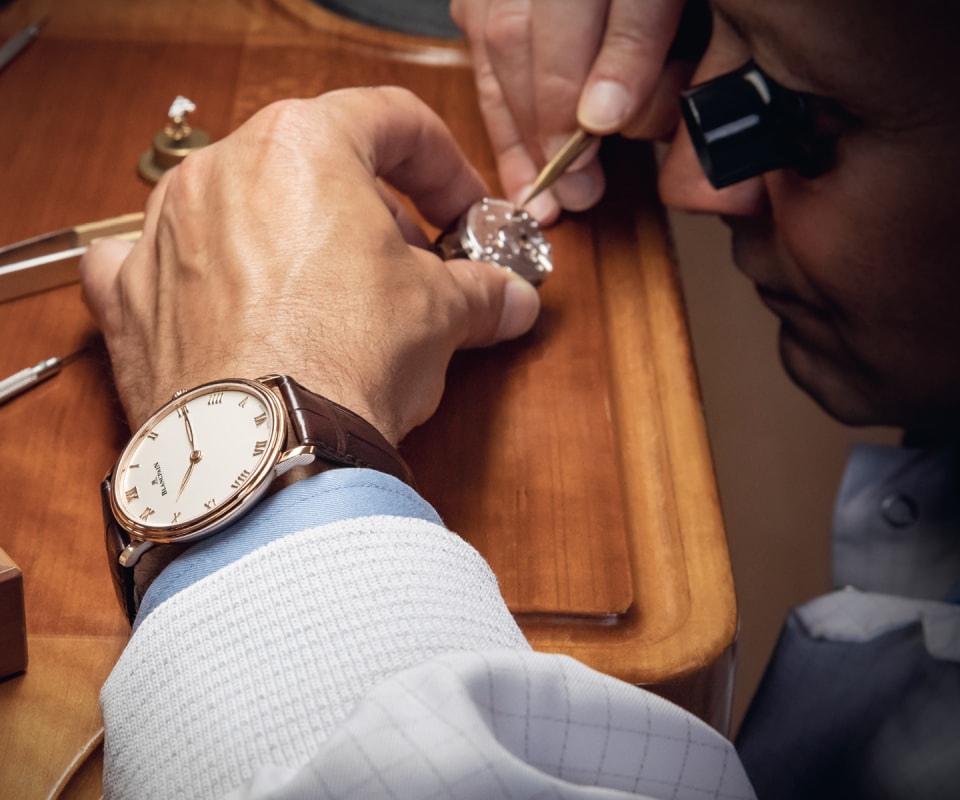
Of course, as the name suggests, the profile of the timepiece is ultra-thin, a mere 7.39 mm. Most importantly, Blancpain has been able to marry this ultra-thin construction with the classic signature of the Villeret collection, the double-stepped bezel (double pomme). These elements combine with the understatement of the dial for the elegance of presentation that marks a true dress watch.
The lineage of the new ultra-thin movement dates back nearly three decades to Edmond Capt’s creation of the original caliber 1150. That movement was revolutionary with its double-barrel construction and long four-day power reserve.
The manual-winding derivation of the 1150 came five years later and became the movement of choice for earlier ultra-thin Blancpain dress watches.
Today’s caliber 11A4B that powers the new Villeret represents a highly evolved and thoroughly updated variant. As with its ancestors, it is architected with two mainspring barrels and offers a four-day power reserve. The long power reserve sets the Villeret apart from other flat constructions that have sacrificed running autonomy in a race for thinness. Indeed, a thin 7 mm profile and a four-day power reserve represents an extraordinary achievement in its marriage of slender elegance and practicality.
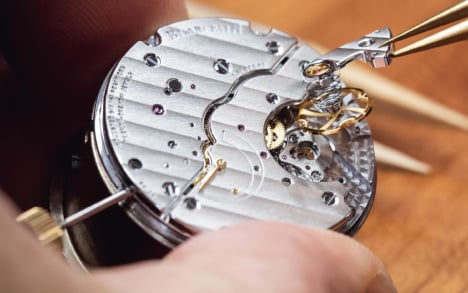
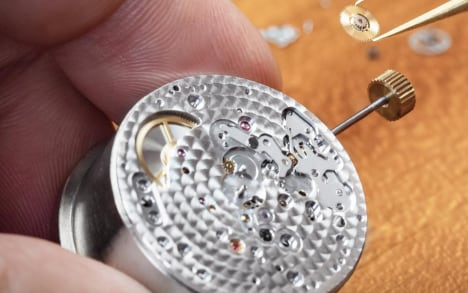
The LINEAGE of the ultra-thin MOVEMENT dates back nearly three decades.
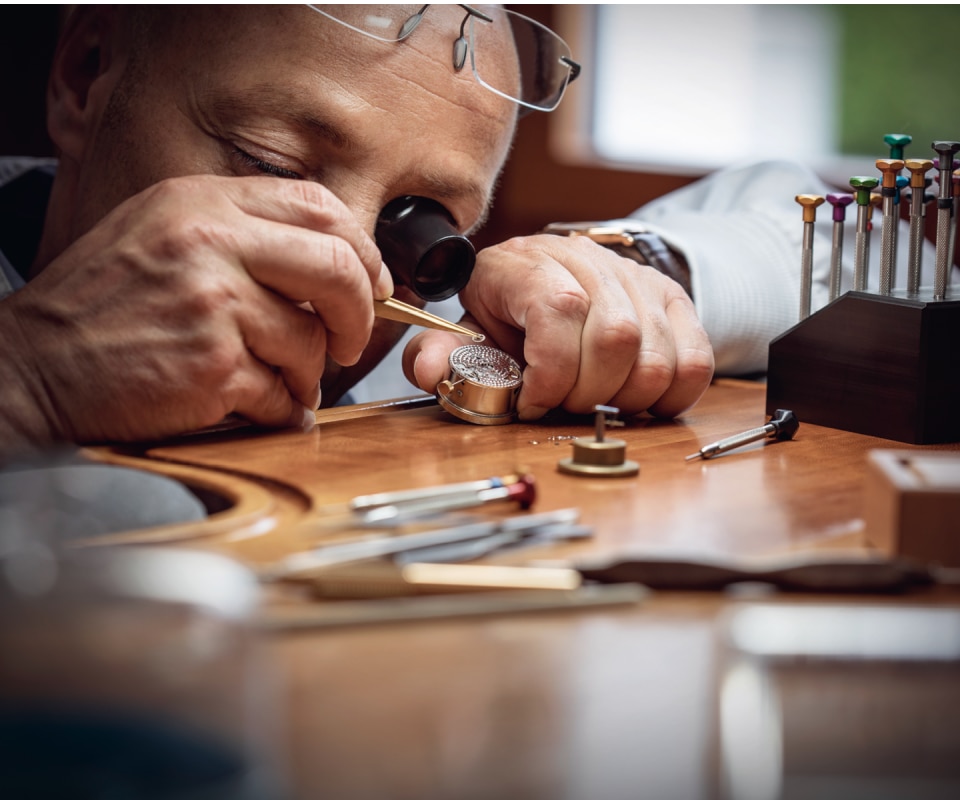
The 11A4B movement is the PRODUCT of YEARS OF STEADY EVOLUTION AND IMPROVEMENT.
There is more to its pedigree than its rare combination of a thin profile and long running autonomy. The new caliber has a free sprung balance with gold regulation screws which facilitates superior rate regulation and resistance to shocks. As with all modern Blancpain movements, the hairspring is fashioned in silicon which has advanced the state of the art from predecessor materials: resistance to magnetism, better isochronism performance, idealized shape, fewer effects from changes in position. Aesthetically, the movement’s bridges have been modified and the wheels are now made of copper beryllium for better wear properties and lower friction. In short, the 11A4B is the product of years of steady evolution and improvement.
The Ultraplate is being offered in four different versions. The 40 mm case is in red gold or stainless steel. The red gold dials are opaline; the steel models feature a white dial. Both have applied Roman numerals. Each of the two metals can be fitted either with a fine alligator strap or with Blancpain’s Mille Mailles metal bracelets (see Issue No. 19 of Lettres du Brassus for a detailed discussion of the Mille Mailles bracelet).
